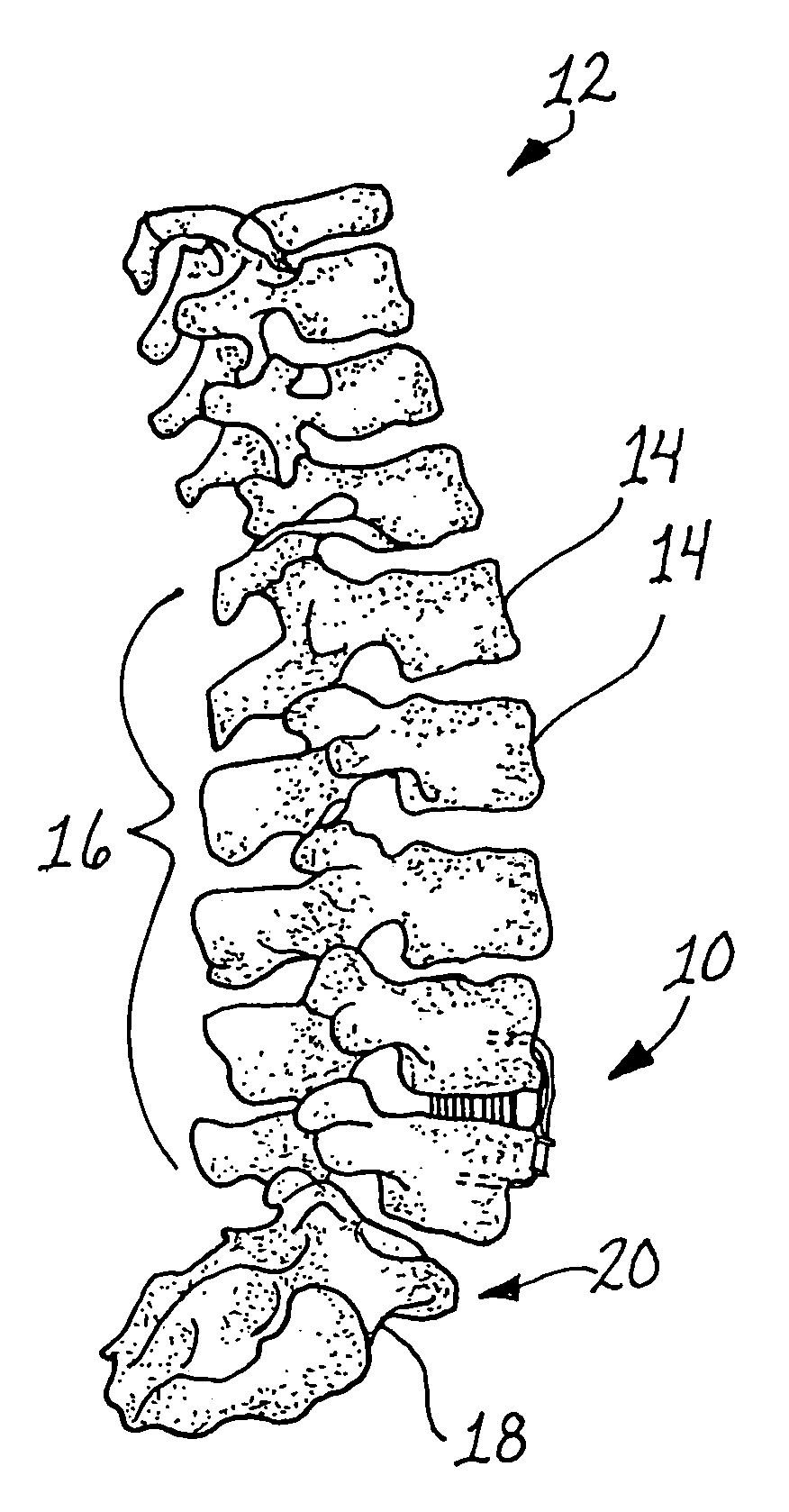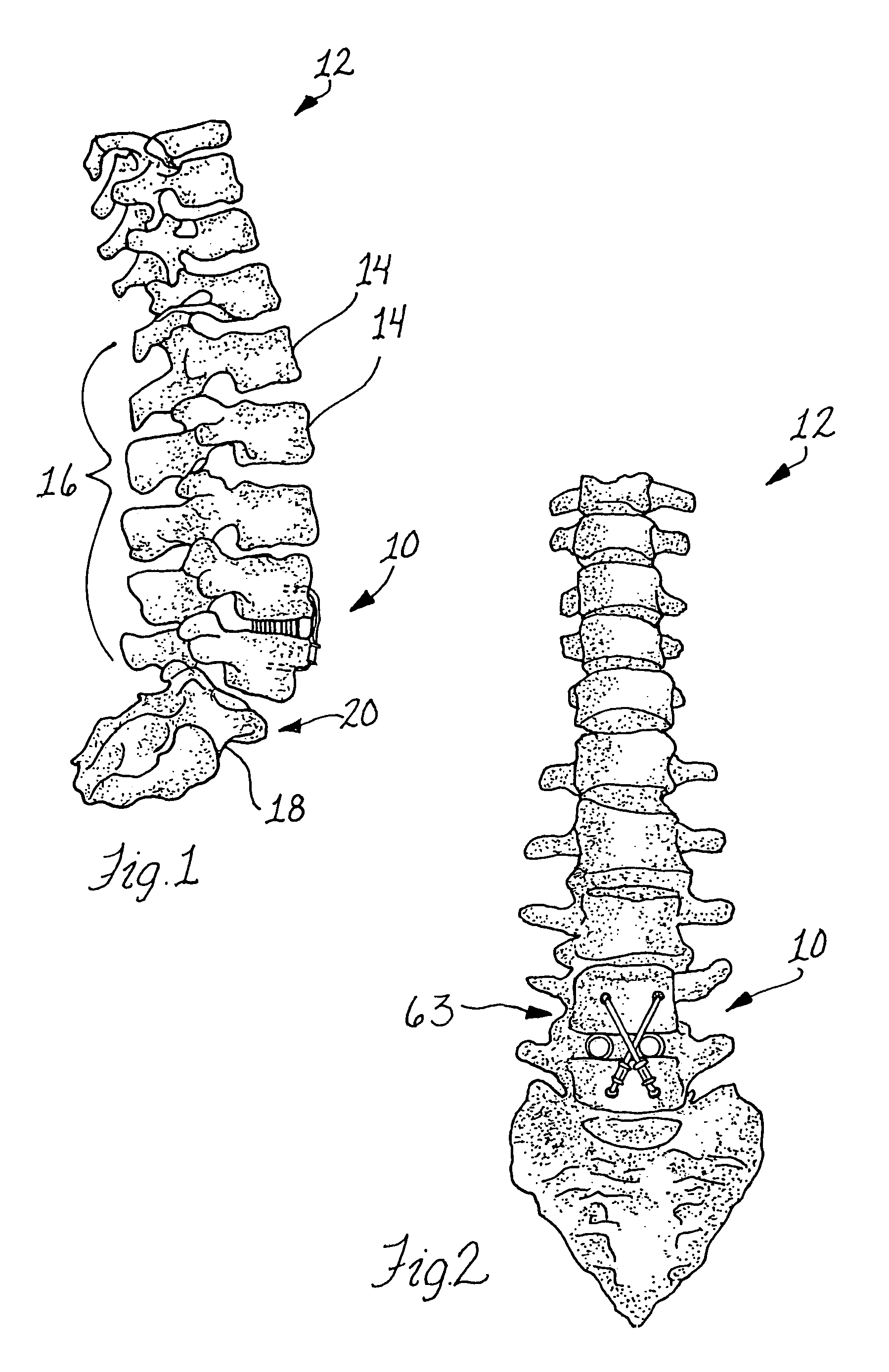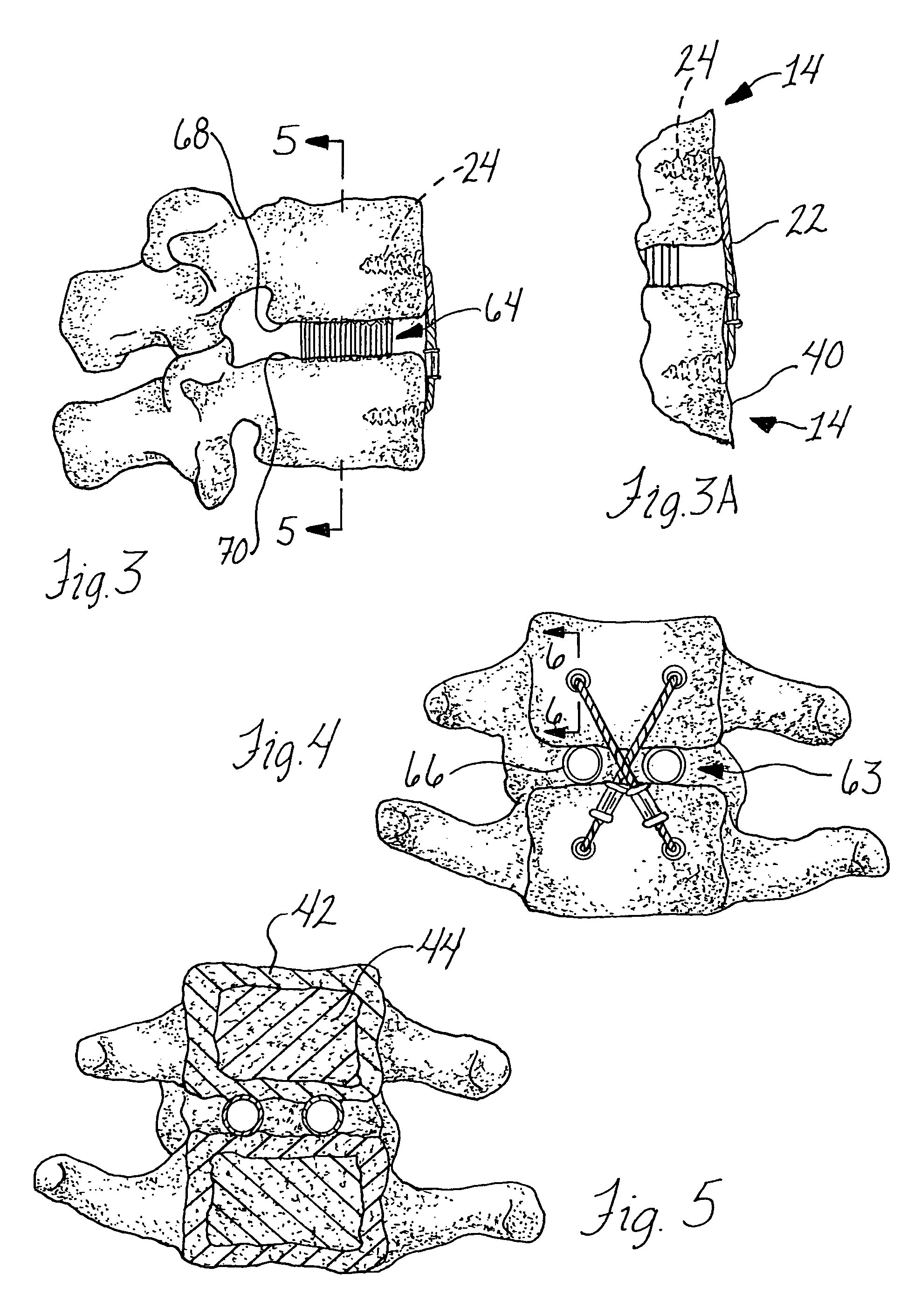System and method for bone fixation
a technology of bone fixation and system, applied in the field of bone fixation system and method, can solve the problems of generating a bending movement at the projecting anchor head, needing posterior procedures, and limited performance, and achieves the effect of reducing the amount of bone material removed, reducing the size of the proximate end of the shank, and improving the holding power of the cable anchor
- Summary
- Abstract
- Description
- Claims
- Application Information
AI Technical Summary
Benefits of technology
Problems solved by technology
Method used
Image
Examples
Embodiment Construction
[0023]In FIGS. 1 and 2, a bone fixation system 10 is shown used on the spinal column 12, and more particularly on vertebrae bones 14 in the lower lumbar region 16 of the spine 12. The system 10 in typical usage is applied to the vertebrae bones 14 of the lower lumbar region 16, such as between the L4 and L5 vertebrae 14 as illustrated, as well as between the composite vertebrae bones 18 in the sacrum region 20 of the spinal column 12, i.e. the L5 and S1 vertebrae bones.
[0024]The bone fixation system 10 herein utilizes flexible cables 22 that are secured to the bones 14 by anchor members 24 (FIG. 3), preferably in the form of screw anchors 26, as shown in FIGS. 7A and 7B. The screw anchors 26 include a shank 28 preferably of a cancellous material and that is threaded with external threads 30 for substantially its entire length from the proximate end 32 to the distal end 34 thereof, as can be seen in FIGS. 8 and 10. In this regard, the screw anchors 26 are preferably headless and can ...
PUM
 Login to View More
Login to View More Abstract
Description
Claims
Application Information
 Login to View More
Login to View More - R&D
- Intellectual Property
- Life Sciences
- Materials
- Tech Scout
- Unparalleled Data Quality
- Higher Quality Content
- 60% Fewer Hallucinations
Browse by: Latest US Patents, China's latest patents, Technical Efficacy Thesaurus, Application Domain, Technology Topic, Popular Technical Reports.
© 2025 PatSnap. All rights reserved.Legal|Privacy policy|Modern Slavery Act Transparency Statement|Sitemap|About US| Contact US: help@patsnap.com



